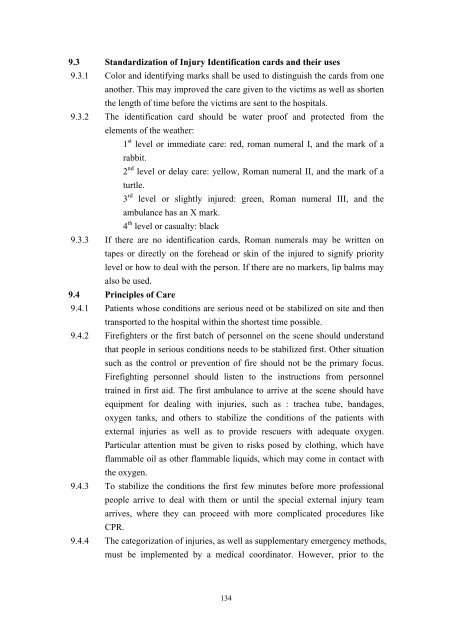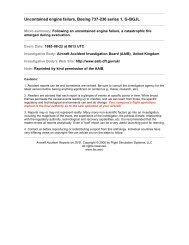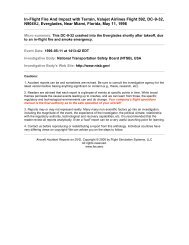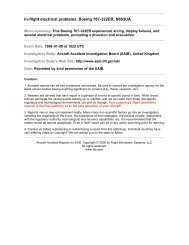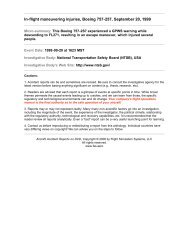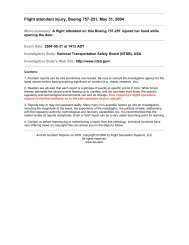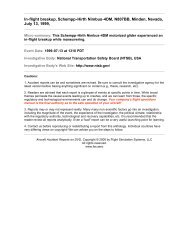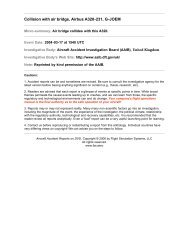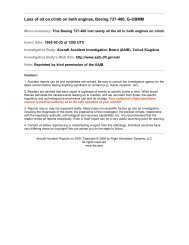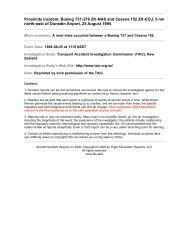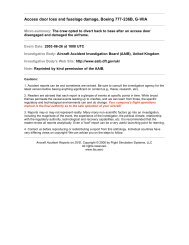Executive Summary - Fss.aero
Executive Summary - Fss.aero
Executive Summary - Fss.aero
Create successful ePaper yourself
Turn your PDF publications into a flip-book with our unique Google optimized e-Paper software.
9.3 Standardization of Injury Identification cards and their uses<br />
9.3.1 Color and identifying marks shall be used to distinguish the cards from one<br />
another. This may improved the care given to the victims as well as shorten<br />
the length of time before the victims are sent to the hospitals.<br />
9.3.2 The identification card should be water proof and protected from the<br />
elements of the weather:<br />
1 st level or immediate care: red, roman numeral I, and the mark of a<br />
rabbit.<br />
2 nd level or delay care: yellow, Roman numeral II, and the mark of a<br />
turtle.<br />
3 rd level or slightly injured: green, Roman numeral III, and the<br />
ambulance has an X mark.<br />
4 th level or casualty: black<br />
9.3.3 If there are no identification cards, Roman numerals may be written on<br />
tapes or directly on the forehead or skin of the injured to signify priority<br />
level or how to deal with the person. If there are no markers, lip balms may<br />
also be used.<br />
9.4 Principles of Care<br />
9.4.1 Patients whose conditions are serious need ot be stabilized on site and then<br />
transported to the hospital within the shortest time possible.<br />
9.4.2 Firefighters or the first batch of personnel on the scene should understand<br />
that people in serious conditions needs to be stabilized first. Other situation<br />
such as the control or prevention of fire should not be the primary focus.<br />
Firefighting personnel should listen to the instructions from personnel<br />
trained in first aid. The first ambulance to arrive at the scene should have<br />
equipment for dealing with injuries, such as : trachea tube, bandages,<br />
oxygen tanks, and others to stabilize the conditions of the patients with<br />
external injuries as well as to provide rescuers with adequate oxygen.<br />
Particular attention must be given to risks posed by clothing, which have<br />
flammable oil as other flammable liquids, which may come in contact with<br />
the oxygen.<br />
9.4.3 To stabilize the conditions the first few minutes before more professional<br />
people arrive to deal with them or until the special external injury team<br />
arrives, where they can proceed with more complicated procedures like<br />
CPR.<br />
9.4.4 The categorization of injuries, as well as supplementary emergency methods,<br />
must be implemented by a medical coordinator. However, prior to the<br />
134


